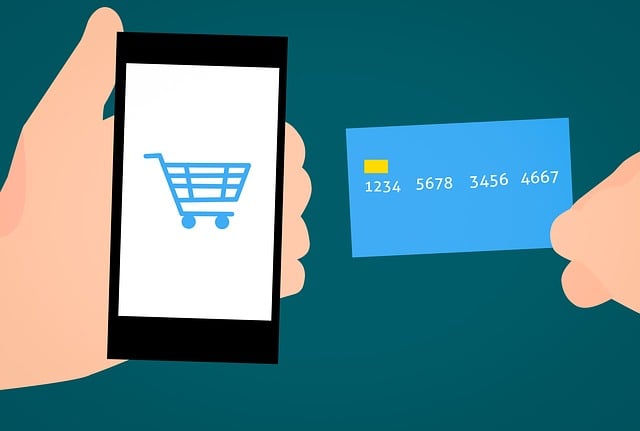A successful ecommerce store design combines intuitive navigation, high-quality visuals, detailed product descriptions, and streamlined checkout to boost sales. Responsive design for mobile users, secure payment gateways, and robust customer support are essential. Integrating social media sharing, user reviews, and personalized recommendations enhances engagement and builds trust. Ecommerce web solutions offer comprehensive tools for managing and optimizing online stores, driving sales growth, and competing in the digital marketplace. A well-designed store attracts and retains customers through seamless navigation, interactive features, and a strong user experience.
The modern e-commerce store is a dynamic hub where businesses thrive and consumers shop. This article explores the key components defining today’s successful online retail space, from intuitive user interface design to secure payment gateways. We delve into best practices for creating an engaging shopping experience, including effective product categorization, visual appeal, and mobile responsiveness. Additionally, we uncover strategies for optimizing conversions, leveraging marketing techniques, and adapting to emerging technologies that shape the future of e-commerce web solutions.
Understanding the Modern E-commerce Store: Key Components

The modern e-commerce store is a dynamic digital space that requires careful consideration in its design. Key components include user-friendly navigation, optimized product listings with high-quality visuals and detailed descriptions, and seamless checkout processes that minimize cart abandonment.
Effective ecommerce store design also incorporates responsive design for mobile users, secure payment gateways, and robust customer support channels. Additionally, integrating social media sharing options, user reviews, and personalized recommendations can enhance the shopping experience, fostering engagement and building trust with potential buyers.
– Definition and significance in today's market

E-commerce web solutions refer to the comprehensive set of tools and services designed to create, manage, and optimize online stores. In today’s digital landscape, an ecommerce store design is more than just a virtual storefront; it’s a strategic investment that can make or break a business’s success in a highly competitive market. With millions of potential customers worldwide, having a well-crafted ecommerce platform becomes crucial for any serious retailer aiming to thrive in the 21st century.
A robust ecommerce web solution encompasses not just the aesthetics and user experience of a website, but also its functionality, security, scalability, and integration capabilities. It involves everything from seamless payment gateways and secure data management to effective inventory control, advanced marketing tools, and robust customer relationship management (CRM). By leveraging these solutions, businesses can streamline their operations, enhance customer engagement, and ultimately drive sales growth in a crowded digital marketplace.
– Essential features and functionalities for a successful online retail space

Creating an effective ecommerce store design is pivotal for success in online retail. The core features and functionalities should prioritize a seamless user experience, from intuitive navigation to secure checkout processes. Incorporate high-quality product visuals, detailed descriptions, and customer reviews to build trust and encourage conversions.
Furthermore, consider implementing responsive design for optimal viewing across devices, integrating search functions for easier product discovery, and adding social media integration to leverage community feedback. Efficient inventory management, robust analytics tools, and scalable infrastructure are also crucial components that ensure your ecommerce platform keeps pace with growth while remaining competitive in the digital marketplace.
E-commerce Store Design: Creating an Engaging User Experience

Creating an engaging user experience is a cornerstone of successful e-commerce store design. The layout and aesthetics of your online storefront play a pivotal role in attracting and retaining customers. A well-designed e-commerce site should offer seamless navigation, intuitive product categories, and high-quality visuals that accurately represent the merchandise. By integrating these elements effectively, you can foster a user-friendly environment that encourages browsing, exploration, and ultimately, conversions.
Beyond aesthetics, consider incorporating interactive features like product reviews, customer testimonials, and detailed product descriptions. These additions not only enhance the shopping experience but also build trust and credibility with potential buyers. Remember that an engaging e-commerce store design goes beyond just aesthetics; it’s about creating a digital space that feels welcoming, informative, and ultimately, compelling for your target audience to engage with and return to.
– Importance of user interface (UI) and user experience (UX) design

The design of an ecommerce store goes beyond aesthetics; it’s a strategic interplay between user interface (UI) and user experience (UX). A well-designed UI ensures your website’s visual appeal, guiding users through clear navigation and intuitive layout. Conversely, UX focuses on usability, ensuring customers can effortlessly find products, complete purchases, and have a satisfying overall journey.
Both aspects are crucial in retaining visitors and converting them into buyers. An excellent ecommerce store design balances beauty with functionality, creating an inviting environment that encourages exploration and purchase. By optimizing UI and UX, businesses can enhance customer engagement, foster brand loyalty, and ultimately drive sales in today’s competitive digital landscape.
– Best practices for intuitive navigation, product categorization, and visual appeal

Responsive Design: Adapting to Various Devices and Screensizes

The design of an ecommerce store must be responsive, meaning it adapts seamlessly to various devices and screen sizes. With a growing number of users shopping online via smartphones and tablets, a mobile-friendly layout is no longer an option but a necessity. Responsive design ensures that your store’s interface, images, and content display optimally on every screen, providing users with a consistent and seamless experience regardless of the device they’re using.
This adaptability not only enhances user satisfaction but also positively impacts key performance indicators (KPIs) such as conversion rates and bounce rates. Search engines, like Google, also favor responsive websites in search rankings, giving your ecommerce store an edge over competitors with static designs.
